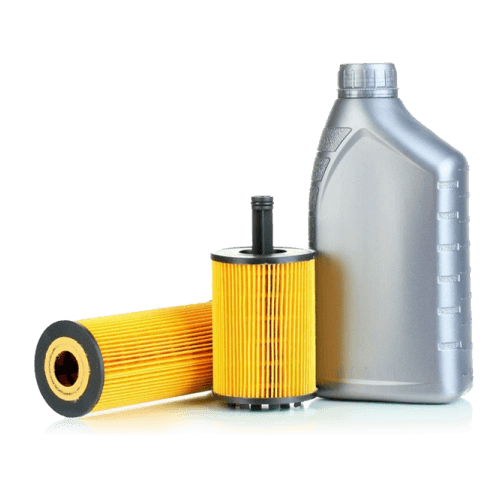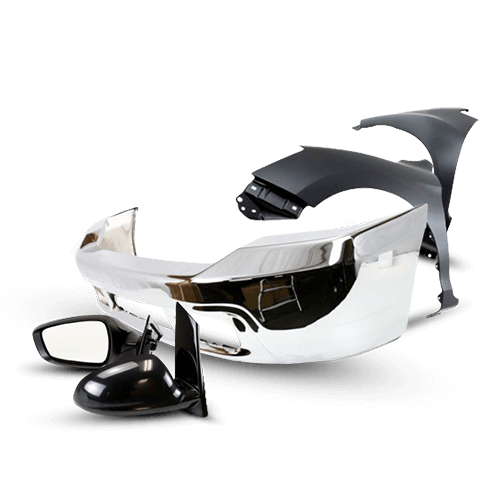
How an Engine Cooling System Works?
Vehicles are engineering marvels that integrate a plethora of intricate systems to provide us with efficient transportation. One of the critical systems that ensures our vehicles run smoothly is the engine cooling system. In this comprehensive guide, we'll look at the workings of engine cooling systems, the components that make them up, and the various types of cooling systems. Let's go on a journey to learn how an engine cooling system works.
What is the Engine Cooling System?
The engine cooling system is a crucial component of a vehicle designed to regulate and manage the temperature of the engine to ensure optimal performance and prevent overheating. If this heat is not properly managed, it can cause engine damage or even failure. The cooling system is critical in keeping the engine temperature within a safe range.
Engine Cooling System Operation
The engine cooling system is critical to keeping the engine at an optimal temperature and ensuring that it runs efficiently and smoothly. The primary function of this system is to dissipate excess heat generated by the combustion process and prevent the engine from overheating. The engine cooling system works in general as follows:
The combustion process, which converts fuel into energy, generates a significant amount of heat as the engine runs. If left unchecked, this heat can cause the engine to overheat, potentially causing severe damage.
The engine cooling system comes into play to prevent this. It circulates water and coolant through a series of components, beginning with the engine and ending with the radiator. The coolant absorbs excess heat from the engine, allowing it to stay within a safe temperature range.
The water pump plays a vital role in this process. A car's water pump uses impeller blades and centrifugal force to move the coolant through the various passages and hoses that make up the cooling system.
The temperature of the coolant drops as heat is transferred from it to the air. The cooled coolant returns to the engine, and the cycle begins again. The thermostat is a temperature-sensitive valve that regulates coolant flow. When the engine is cold, it remains closed, allowing it to warm up quickly. When the engine reaches the desired operating temperature, the thermostat opens, allowing coolant to flow.
The radiator cooling fan also aids in heat dissipation. It is typically electrically controlled and activates when the engine temperature exceeds a certain threshold. The fan circulates air through the radiator, further cooling the coolant.
In summary, the engine cooling system works by continuously circulating coolant through the engine and radiator, allowing excess heat from the engine to be transferred to the surrounding air. This process assists in keeping the engine temperature within a safe and efficient range, ensuring optimal performance and avoiding overheating.
Introduction of Engine Cooling System Parts
The engine cooling system is an essential component of any vehicle, designed to regulate and maintain the engine's optimal temperature. This system prevents overheating and ensures that the engine runs efficiently. To accomplish this task, several components collaborate, each with a distinct role in the overall cooling process. Understanding the components of the engine cooling system is critical for proper maintenance and troubleshooting. In this section, we will look at the key components of the engine cooling system and their roles in maintaining the engine's temperature and performance:

Coolant Circulation
The engine cooling system circulates a mixture of water and coolant (antifreeze) through a network of passages and channels within the engine and the radiator. This mixture absorbs heat from engine components, causing them to cool.
Water Pump.
The water pump is responsible for propelling the coolant throughout the system. It is usually driven by a belt connected to the engine's crankshaft. As the water pump rotates, a flow of coolant is created, ensuring a continuous exchange of heat.
Radiator
The radiator is a heat exchanger located at the front of the vehicle. As the hot coolant flows through the radiator's thin tubes, air passes over the tubes, dissipating the heat. This process cools down the coolant before it returns to the engine.

Thermostat
The thermostat controls the operating temperature of the engine. When the engine is cold, it remains closed, allowing it to heat up quickly. When the engine reaches the optimal temperature, the thermostat opens, allowing coolant to flow to the radiator for cooling.

Coolant Reservoir
The coolant reservoir, also known as the overflow tank, is a storage space for excess coolant. The coolant expands and flows into the reservoir as the engine heats up. When the engine cools, it draws coolant from the reservoir to keep the level stable.
Hoses and Connectors
Various hoses and connectors channel the coolant between different components of the cooling system. These parts need to be in good condition to prevent leaks and ensure efficient coolant flow.
Coolant Temperature Sensor
This sensor monitors the temperature of the coolant and sends signals to the engine control unit (ECU). The ECU uses this information to adjust the engine's performance and optimize fuel efficiency.
Radiator Cooling Fan
In many vehicles, an electric cooling fan is used to enhance airflow through the radiator. The fan automatically turns on when the engine temperature rises beyond a certain point, providing extra cooling power during slow speeds or idling.
Manifold and head gaskets
These gaskets keep coolant out of the engine cylinders and oil passages. Maintaining their integrity is critical for the cooling system's efficiency.
Freeze Plugs
Freeze plugs are small metal discs that are strategically installed in engine blocks and cylinder heads to prevent engine damage caused by freezing coolant. While freeze plugs frequently last hundreds of thousands of miles, they are not without failure. If your engine's freeze plugs fail, it could cause catastrophic damage that is both expensive and difficult to repair.
The cooling system contributes to improved fuel efficiency, lower emissions, and longer engine life by effectively managing the engine's temperature. Maintaining the engine cooling system on a regular basis, such as checking coolant levels, inspecting hoses for leaks, and ensuring proper fan operation, is critical to keeping it in good working order.

Checking All Types of Engine Cooling Systems
Engine cooling systems are an essential component of any vehicle, ensuring that the engine runs at the optimal temperature for efficient and dependable performance. Engine cooling systems are classified into several types, each with its own distinct design and features. These systems must be inspected and maintained on a regular basis to avoid overheating, maintain engine efficiency, and extend the life of your vehicle. In this section, we'll look at the various types of engine cooling systems and the key points to look for during an inspection:
Working of Air Cooling System
An air cooling system, which is common in motorcycles and some older vehicles, dissipates heat by utilizing the natural airflow generated by the vehicle's motion. Air cooling systems, while simple and lightweight, are less efficient than liquid cooling systems.
Advantages of Air Cooling System:
- Simple design and fewer components
- Lightweight and compact
- Lower maintenance requirements
Disadvantages of Air Cooling System:
- Limited cooling capacity
- Prone to overheating, especially in hot climates
- Less effective at dissipating heat at low speeds
Working of Liquid Cooling System
Liquid cooling systems are more prevalent in modern vehicles due to their efficiency. Coolant circulates through various components to absorb heat from the engine and transfer it to the radiator for dissipation.

Advantages of Liquid Cooling System:
- Efficient heat dissipation, even in extreme conditions
- Better temperature control, reducing the risk of overheating
- Suitable for high-performance engines
Disadvantages of Liquid Cooling System:
- More complex design and additional components
- Slightly heavier than air cooling systems
- Requires regular maintenance and checks for leaks
Reasons for the Importance of the Engine Cooling System
The engine cooling system holds a pivotal role in ensuring the proper functioning and longevity of a vehicle's engine. Its significance extends beyond just preventing overheating; it contributes to multiple aspects that collectively enhance the overall performance, efficiency, and reliability of the engine. Let's explore the reasons why the engine cooling system is indispensable:
Temperature Regulation
The engine generates an immense amount of heat during operation. The cooling system helps maintain the engine's temperature within a safe and optimal range. This prevents extreme heat that could lead to engine damage, ensuring the engine's longevity.
Efficient Combustion
A regulated engine temperature promotes efficient combustion of fuel, optimizing fuel efficiency and power output. When the engine operates at the right temperature, it burns fuel more completely and produces fewer harmful emissions.
Prevention of Overheating
One of the most critical roles of the cooling system is to prevent engine overheating. Overheating can cause irreversible damage to engine components, leading to expensive repairs or even engine replacement.
Reduction of Friction
A well-cooled engine reduces friction among moving parts. This not only extends the life of engine components but also contributes to a smoother and quieter operation.
Minimization of Wear and Tear
Proper cooling reduces the wear and tear on engine parts caused by extreme heat. This includes components like gaskets, seals, and bearings, which can degrade quickly in high-temperature conditions.
Preservation of Lubricants
Heat can cause lubricants, such as engine oil, to break down or evaporate, compromising their effectiveness. Adequate cooling helps maintain the stability and lubricating properties of these essential fluids.

Prevention of Boiling
Coolant also raises the boiling point of water, preventing it from turning into steam under high temperatures. This helps the engine continue functioning smoothly even in demanding conditions.
Consistent Performance
A properly cooled engine operates consistently, whether in stop-and-go traffic or on the highway. This consistency ensures a stable driving experience and minimizes the risk of sudden breakdowns.
Optimal Engine Efficiency
Maintaining the right temperature range improves the engine's thermal efficiency. This efficiency translates into better power output, smoother acceleration, and improved fuel economy.
Reduced Emissions
A well-cooled engine produces fewer harmful emissions. When the combustion process is regulated, it reduces the production of pollutants that contribute to air pollution and environmental damage.
Enhanced Resale Value
Vehicles with a well-maintained cooling system have higher resale value. Prospective buyers are more likely to be interested in a vehicle that has been cared for, including its critical systems like the engine cooling system.
Safe Operation
An efficient cooling system prevents unexpected engine failures due to overheating, reducing the risk of accidents caused by sudden loss of engine power.
Longer Engine Lifespan
All the benefits of proper cooling culminate in a longer engine lifespan. Regular maintenance and attention to the cooling system can help your vehicle's engine last for hundreds of thousands of miles.
Finally, the engine cooling system is more than just a mechanism for preventing overheating; it is a critical component that influences many aspects of engine performance and longevity. Vehicle owners can enjoy a smoother, more efficient, and reliable driving experience while extending the life of their engines by keeping this system in top condition.

Conclusion
Understanding how an engine cooling system works is crucial for every vehicle owner. This intricate system plays a vital role in maintaining the engine's temperature and overall performance. By ensuring regular maintenance and promptly addressing any issues, you can enjoy a smoother and more efficient driving experience. So, next time you're on the road, remember the unsung hero—the engine cooling system—that keeps your engine running smoothly.
FAQs
- How often should I check my engine cooling system?
Regular checks are recommended, especially before long trips or during seasonal changes. Ideally, check your cooling system at least twice a year.
- Can I use water instead of coolant in my cooling system?
While water can temporarily be used in emergencies, coolant is preferable as it has additives that prevent corrosion and freezing.
- What happens if my engine overheats?
An overheating engine can lead to serious damage, including blown gaskets, warped cylinder heads, and even engine failure.
- Can I drive with a faulty radiator fan?
Driving with a faulty radiator fan can lead to overheating, especially in traffic or hot weather. It's best to have it repaired before driving.
- How do I know if my thermostat is failing?
If your engine takes a long time to reach operating temperature or constantly overheats, your thermostat might be malfunctioning.























































